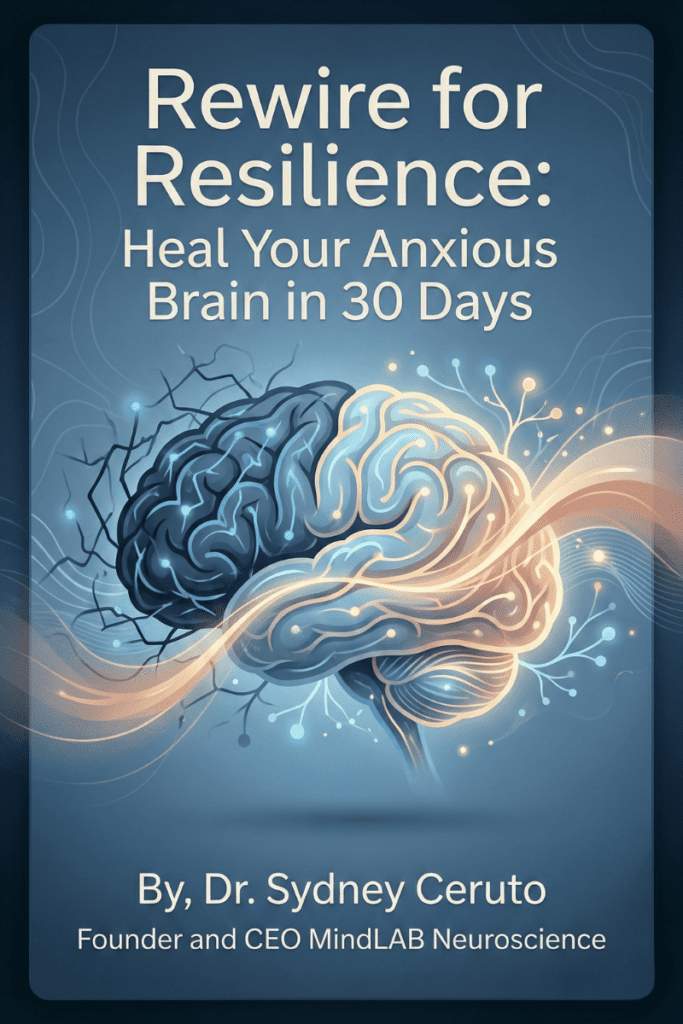In the labyrinth of human hearts, where passion and reason intertwine, two powerful forces often blur into one: love and limerence. While both can set your soul ablaze and consume your thoughts, they are fundamentally different beasts. Understanding the distinction between limerence vs love is crucial for maintaining healthy relationships and emotional well-being. This comprehensive guide will explore the intricacies of limerence, its impact on our lives, and how to break free from its grip.
What is Limerence?
Limerence is an intense, involuntary state of romantic attraction and emotional dependency on another person, often characterized by obsessive thoughts, fantasies, and a desire for reciprocation. Coined by psychologist Dorothy Tennov in her 1979 book Love and Limerence: The Experience of Being in Love, this term describes a psychological state that many people experience but often misinterpret as true love.
Key Characteristics of Limerence:
- Intrusive thoughts about the limerent object
- Intense longing for reciprocation
- Mood swings based on perceived reciprocation
- Idealization of the limerent object
- Physical symptoms like heart palpitations and sweating
- Anxiety and fear of rejection
The Limerent Object: Who and What Is It?
The limerent object (LO) is the person to whom the limerent individual’s intense feelings are directed. This person becomes the center of the limerent’s thoughts and fantasies, often taking on an idealized, almost superhuman quality in their mind. The LO serves as a focal point for the limerent’s emotional energy, desires, and hopes, often to an obsessive degree.
Characteristics of a Limerent Object:
- Often someone perceived as attainable yet uncertain
- May possess qualities the limerent person admires or desires
- Can be someone the limerent barely knows
- Might be unavailable (e.g., married or in a relationship)
- Often embodies some element of “fantasy” or “rescue” for the limerent
The Role of the Limerent Object:
- Idealization: The LO is often seen through rose-colored glasses, with their positive qualities exaggerated and flaws minimized or ignored.
- Projection: The limerent person may project their own desires, needs, and fantasies onto the LO, seeing them not as they truly are, but as what the limerent wants them to be.
- Emotional Catalyst: Interactions with or thoughts about the LO trigger intense emotional responses, including euphoria, anxiety, and despair.
- Focus of Obsession: The LO becomes the primary focus of the limerent’s thoughts, daydreams, and plans.
- Source of Validation: The limerent person often seeks validation and self-worth through the LO’s perceived approval or reciprocation.
The LO’s Awareness and Response:
It’s important to note that the LO may be completely unaware of the limerent’s feelings, or they may be aware but not reciprocate. In some cases, the LO might even be uncomfortable with the intensity of the limerent’s attention.
The LO in Limerence vs Love:
In healthy love, a partner is seen realistically and appreciated for who they are. In limerence, the LO is often a projection of the limerent’s ideals and may bear little resemblance to the actual person.
Impact on the Limerent Person:
The limerent’s fixation on the LO can lead to:
- Neglect of other relationships and responsibilities
- Emotional instability based on perceived interactions with the LO
- Difficulty concentrating on tasks unrelated to the LO
- Potential for risky or inappropriate behavior to gain the LO’s attention
Understanding the role and nature of the limerent object is crucial in recognizing and addressing limerent feelings. It’s often the first step in breaking free from the cycle of limerence and moving towards healthier relationship patterns.

Limerence vs Love: Key Differences
Understanding the differences between love and limerence is crucial for maintaining healthy relationships and emotional well-being. While both experiences can be intense and transformative, they operate on fundamentally different principles and lead to vastly different outcomes. Recognizing these distinctions can help individuals navigate their emotional landscape more effectively, make informed decisions about their relationships, and seek appropriate support when needed. By clearly delineating love from limerence, we can cultivate more authentic, sustainable connections and protect ourselves from the potential pitfalls of mistaking obsessive infatuation for genuine love. Here are the primary distinctions:
1. Duration and Stability
- Love: Tends to be long-lasting and stable, growing deeper over time.
- Limerence: Usually temporary, lasting from a few months to several years, with intense highs and lows.
2. Focus
- Love: Focuses on mutual growth, understanding, and support.
- Limerence: Obsessively focuses on the limerent object and gaining their reciprocation.
3. Idealization
- Love: Sees the partner realistically, accepting both strengths and flaws.
- Limerence: Idealizes the limerent object, often ignoring or dismissing their flaws.
4. Emotional State
- Love: Generally provides a sense of comfort, security, and contentment.
- Limerence: Characterized by extreme emotional highs and lows, anxiety, and insecurity.
5. Physical Reactions
- Love: May include physical attraction but doesn’t dominate the relationship.
- Limerence: Often involves intense physical reactions like sweating, heart palpitations, and “butterflies” in the stomach.
6. Reciprocation
- Love: Thrives on mutual feelings and reciprocation.
- Limerence: Can persist even without reciprocation, often fueled by uncertainty.
7. Impact on Daily Life
- Love: Enhances daily life without disrupting it.
- Limerence: Often interferes with work, relationships, and other aspects of life.
Can a Person Be Unaware They Are a Limerent Object?
Yes, it’s entirely possible and, in fact, quite common for a person to be unaware that they are someone’s limerent object (LO). This unawareness can occur for several reasons:
- Lack of Communication: The limerent person may never express their intense feelings directly to the LO.
- Misinterpretation of Behavior: The LO might misinterpret the limerent person’s attention as mere friendliness or professional interest.
- Social or Professional Barriers: In some cases, social norms or professional boundaries may prevent the LO from considering the possibility of such intense feelings.
- The Limerent’s Discretion: Some limerent individuals go to great lengths to hide their feelings, fearing rejection or embarrassment.
- Projection vs. Reality: The limerent’s idealized version of the LO may be so far removed from reality that the actual person doesn’t recognize themselves in the limerent’s behavior.
Implications of LO Unawareness:
- One-Sided Emotional Investment: The limerent person may be investing enormous emotional energy into a relationship that doesn’t exist in the way they imagine.
- Potential for Misunderstandings: The LO’s actions may be misinterpreted by the limerent person, leading to emotional turbulence or inappropriate responses.
- Ethical Considerations: If the LO becomes aware of the limerence, they may feel uncomfortable or burdened by this knowledge, especially if they’re in a position of authority or in a committed relationship.
- Delayed Resolution: The limerent person may prolong their state of limerence due to lack of clear rejection or acceptance from an unaware LO.
What to Do If You Suspect You’re an LO:
If you suspect you might be someone’s limerent object:
- Set clear boundaries in your interactions.
- Avoid sending mixed signals or providing false hope.
- If appropriate, have an honest conversation about the nature of your relationship.
- Seek advice from a trusted friend or professional if the situation is affecting your personal or professional life.
Understanding that limerent objects are often unaware of their status underscores the internal and often one-sided nature of limerence. It highlights the importance of clear communication and realistic perceptions in building healthy relationships.
Who is More Susceptible to Limerence?
While anyone can experience limerence, certain factors may make some individuals more prone to it:
- Attachment Style: People with anxious attachment styles are more likely to experience limerence.
- Past Trauma: Individuals who have experienced childhood trauma or neglect may be more susceptible.
- Low Self-Esteem: Those with low self-esteem may be more prone to limerence.
- Personality Traits: Certain traits, such as a tendency towards obsessive thinking or romanticism, may increase likelihood.
- Cultural Factors: Societies that heavily romanticize love may inadvertently encourage limerent behaviors.
- Mental Health Conditions: People with certain conditions, such as Obsessive-Compulsive Condition (OCD) or Borderline Personality Condition (BPD), may be more susceptible.
The Neuroscience of Limerence
Understanding the brain mechanisms behind limerence can help explain its powerful grip on our thoughts and emotions. Limerence involves several key neurotransmitters and brain regions, creating a complex neurobiological landscape that drives the intense emotional and behavioral patterns associated with this state.
Neurotransmitters Involved:
- Dopamine: The “feel-good” neurotransmitter associated with reward and pleasure. In limerence, dopamine surges create a euphoric high when thinking about or interacting with the limerent object (LO). This dopamine rush reinforces limerent behaviors, creating a cycle similar to addiction.
- Norepinephrine: Increases alertness and arousal. In limerence, norepinephrine contributes to the heightened awareness and excitement experienced in the presence of the LO, as well as the anxiety when apart.
- Serotonin: Decreased levels of serotonin are observed in both limerence and Obsessive-Compulsive Condition (OCD). This reduction may explain the obsessive thoughts and compulsive behaviors associated with limerence.
- Oxytocin: Known as the “bonding hormone,” oxytocin reinforces attachment to the LO. It’s released during physical touch and even when thinking about the LO, strengthening the emotional bond.
- Cortisol: The stress hormone cortisol is often elevated during limerence, particularly when experiencing uncertainty or perceived rejection from the LO.
Brain Regions Involved:
- Prefrontal Cortex (PFC): Involved in decision-making, impulse control, and rational thinking. During limerence, the PFC’s function may be impaired, leading to poor judgment and decision-making regarding the LO.
- Amygdala: Processes emotions and may be hyperactive during limerent states, contributing to the intensity of emotional responses.
- Nucleus Accumbens: Part of the brain’s reward system, it’s highly active during limerence, reinforcing behaviors that bring the limerent person closer to the LO.
- Anterior Cingulate Cortex (ACC): Involved in emotional regulation and decision-making. In limerence, the ACC may contribute to the obsessive focus on the LO.
- Hypothalamus: Regulates the release of various hormones involved in limerence, including oxytocin and vasopressin.
The Neurobiological Cycle of Limerence:
- Trigger: An interaction with or thought about the LO triggers the release of dopamine and norepinephrine.
- Euphoria: These neurotransmitters create feelings of euphoria and excitement, reinforcing the desire for more interaction with the LO.
- Obsession: Decreased serotonin levels contribute to obsessive thoughts about the LO.
- Craving: The nucleus accumbens drives cravings for more interaction with the LO.
- Stress Response: Uncertainty or perceived rejection activates the stress response, releasing cortisol.
- Impaired Judgment: Elevated emotions and stress hormones impair the PFC’s ability to make rational decisions.
- Reinforcement: Any positive interaction with the LO restarts the cycle, reinforcing the limerent state.
Neuroplasticity and Limerence:
Repeated cycles of limerence can strengthen neural pathways associated with these intense emotions, making individuals more susceptible to future limerent experiences. However, this neuroplasticity also means that with conscious effort and appropriate interventions, these pathways can be rewired to support healthier relationship patterns.
Implications for Treatment:
By understanding the complex interplay of neurotransmitters and brain regions involved in limerence, individuals can gain insight into their experiences and work towards breaking the cycle of obsessive attachment. This neurobiological perspective underscores the importance of a holistic approach to managing limerence, addressing both the psychological and physiological aspects of this intense emotional state. For more detailed information on the neuroscience behind emotional states and decision-making, visit the Journal of Neuroscience.

Breaking Free from Limerence: A Neuroscience-Based Approach
Overcoming limerence is challenging but possible through neuroscience-based life coaching and neural pathway re-wiring. This approach leverages the brain’s neuroplasticity to create lasting change. Here are key strategies rooted in neuroscience:
- Neural Pattern Recognition: Utilize brain mapping techniques to identify neural patterns associated with limerent thoughts and behaviors. This awareness is the first step in rewiring these pathways.
- Mindfulness-Based Neuroplasticity: Practice mindfulness exercises designed to strengthen the prefrontal cortex, enhancing emotional regulation and decision-making capabilities.
- Cognitive Restructuring: Employ neurocognitive techniques to reframe thoughts, creating new neural pathways that support healthier perceptions of relationships.
- Neurofeedback Training: Use real-time brain activity monitoring to learn self-regulation of neural processes associated with limerent obsessions.
- Neurochemical Balance Restoration: Implement lifestyle changes and targeted interventions to balance neurotransmitters like dopamine and serotonin, reducing the intensity of limerent feelings.
- Social Bonding Redirection: Engage in activities that promote the release of oxytocin through healthy social interactions, redirecting attachment needs.
- Stress Response Rewiring: Learn techniques to regulate the amygdala’s response to perceived rejection or uncertainty, reducing anxiety associated with limerence.
- Memory Reconsolidation: Use guided visualization and other memory reconsolidation techniques to reprocess and neutralize intense emotional memories related to the limerent object.
- Neurogenesis Promotion: Incorporate lifestyle changes that promote neurogenesis, particularly in the hippocampus, to support the formation of new, healthier relationship patterns.
- Interoceptive Awareness Training: Develop greater awareness of bodily sensations associated with limerent thoughts, enabling better self-regulation and emotional control.
Through these neuroscience-based strategies, individuals can effectively rewire their neural pathways, breaking free from the grip of limerence and establishing healthier patterns of thinking, feeling, and behaving in relationships. This approach not only addresses the symptoms of limerence but also creates lasting neurological changes that support overall emotional well-being and relationship satisfaction.
Learn more about our Neuroscience-Based Life Coaching programs.





